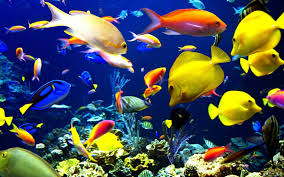Biology

- Animal Kingdom: Model Questions
Animal Kingdom: Model Questions 1. An animal shows the following characters:· Body is dorso-ventrally flattened· Parenchyma cells are found between the body...
- Animal Kingdom (kingdom Animalia)
Click here for PDFAnimals are multicellular and heterotrophic. Animal kingdom is most diverse than the plant kingdom. BASIS OF CLASSIFICATION 1. Levels of organization 3 levels (based on organization of cells):a. Cellular level of organization:...
- Respiratory Organs Of Animals
Phylum Respiratory organ Porifera Body surface Cnidaria Body surface Ctenophora Body surface Platyhelminthes Body surface Nemathelminthes Body surface Annelida Skin (integument) Arthropoda Aquatic insects (mayflies, nymphs...
- Animal Kingdom- Notes
Phylum Name given by No. of species Levels of organization Germ layers Symmetry Coelom Porifera Robert Grant 5000 Cellular Diploblastic Asymmetrical/ radial Acoelomate Cnidaria Leuckart (1847) 9000 Tissue...
- Some Important Connecting Links
Link Between the groups 1. Actinomycetes Bacteria & Fungi 2. Archaeopteryx Reptiles & Birds 3. Balanoglossus Chordates & Non-chordates 4. Chimera (Rabbit...
Biology
Comparison between cartilaginous and bony fishes
| Cartilaginous fishes (Chondricthyes) | Bony fishes (Osteichthyes) |
| 1. Exclusively marine. | Marine & fresh water. |
| 2. Heterocercal caudal fin. | Homocercal caudal fin. |
| 3. Cartilaginous endoskeleton. | Bony endoskeleton |
| 4. Gill slits without operculum. | 4 pairs of gills covered by an operculum on each side. |
| 5. Crescent (half moon) shaped ventral mouth | Terminal mouth |
| 6. Skin with placoid scales. Teeth are modified placoid scales which are backwardly directed. | Scales are Cycloid, ctenoid etc. |
| 7. No air bladder so they have to swim constantly to avoid sinking. | Air bladder for buoyancy |
| 8. Sexes are separate. In males pelvic fins bear claspers. | Sexes are separate. No claspers |
| 9. Internal fertilization. | Fertilisation external |
| 10. Many of them viviparous | Mostly oviparous |
| 11. E.g. Scoliodon (Dog fish), Pristis (Saw fish), Carcharodon (Great white shark), Trygon (Sting ray), Torpedo (Electric ray) | E.g. Marine fishes: Exocoetus (flying fish), Hippocampus (sea horse), Sardine, Mackeral, Tuna, Remora (sucker fish), Pomfret, Cybium Fresh water fishes: Labeo (Rohu), Catla (Katla), Clarias (Magur), Tilapia, Anabas (Climbing perch) Aquarium fishes: Betta (Fighting fish), Pterophyllum (Angel fish) etc. |
- Animal Kingdom: Model Questions
Animal Kingdom: Model Questions 1. An animal shows the following characters:· Body is dorso-ventrally flattened· Parenchyma cells are found between the body...
- Animal Kingdom (kingdom Animalia)
Click here for PDFAnimals are multicellular and heterotrophic. Animal kingdom is most diverse than the plant kingdom. BASIS OF CLASSIFICATION 1. Levels of organization 3 levels (based on organization of cells):a. Cellular level of organization:...
- Respiratory Organs Of Animals
Phylum Respiratory organ Porifera Body surface Cnidaria Body surface Ctenophora Body surface Platyhelminthes Body surface Nemathelminthes Body surface Annelida Skin (integument) Arthropoda Aquatic insects (mayflies, nymphs...
- Animal Kingdom- Notes
Phylum Name given by No. of species Levels of organization Germ layers Symmetry Coelom Porifera Robert Grant 5000 Cellular Diploblastic Asymmetrical/ radial Acoelomate Cnidaria Leuckart (1847) 9000 Tissue...
- Some Important Connecting Links
Link Between the groups 1. Actinomycetes Bacteria & Fungi 2. Archaeopteryx Reptiles & Birds 3. Balanoglossus Chordates & Non-chordates 4. Chimera (Rabbit...
